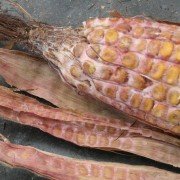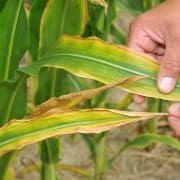2014 Grain Corn Ear Mould and Vomitoxin Survey
Greg Stewart, OMAFRA Corn Specialist; Albert Tenuta, OMAFRA Field Crop Pathologist
The OMAFRA Field Crops team has completed the survey of the 2014 Ontario corn crop to determine ear mould incidence and the occurrence of mycotoxins in the grain. These mycotoxins, particularly vomitoxin (DON) produced primarily by Gibberella/Fusarium ear moulds, are grading factors and can be disruptive when fed to livestock, especially hogs.
202 samples were collected from October 14 to October 17, 2014 from corn fields across the province. In each field, 2 random areas were selected: in each area 10 consecutive ears were hand harvested and bagged. In fields with several hybrids, representative samples were taken from two areas for each hybrid (maximum of 4 hybrids per field). The 20-ear samples were then immediately dried and shelled. The resultant sample was thoroughly mixed and a sub-sample provided to A&L Laboratories in London for vomitoxin (DON) analysis.



